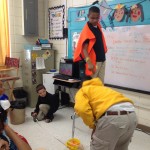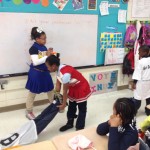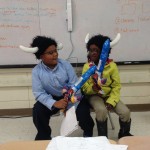For the past few weeks we have been learning about the election process while reading a realistic fiction book entitled President of the Whole Fifth Grade. We held our own mock elections including nominations, primaries, campaign rallies, and speech debates before finally electing our fourth grade class president.. The six candidates did a phenomenal job, and the fourth grade teachers could not be any prouder of them. We are happy to announce that Jaylen will be our fourth grade class president for the 2014-2015 school year. Thank you to all of the candidates for your hard work and great attitude throughout the entire process, and congratulations to Jaylen!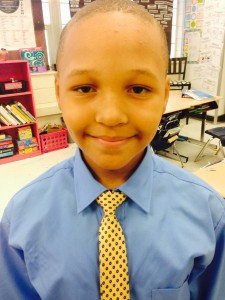
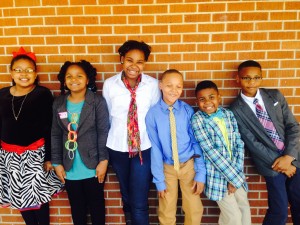
Author Archives: Casey Watts
What’s the Problem and How You Gonna Solve It?
The students learned about acting using movement and emotions through a video clip from the movie, Karate Kid. The students also learned about acting versus tableaux, a frozen picture, from a shadow theater group from Hungary. The students connected this knowledge of theater to the text structure of problem and solution that they had been studying in reading. The students had to act out a problem using movement and emotions. The students then portrayed the solution for the problem using a tableaux. This was a really fun way for students to connect a variety of learning together in one presentation. Make sure you ask your child about it and see some pics below!
A Day in Spain

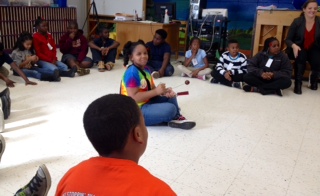
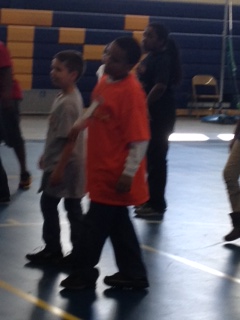
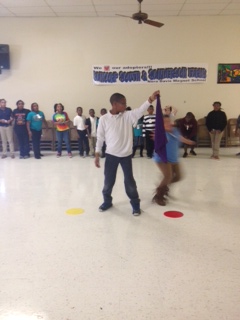 During the annual Cultural Arts Festival, the students were emerged in a wealth of knowledge of the culture of Spain. During the day, we traveled to meet famous artists, taste delicious food, and even were introduced to the language. We even learned about the famous Run of the Bulls. On some of our others stops, we learned a Spanish dance, enjoyed a Spanish readers theater, and even ended the day with some famous games played in Spain.
During the annual Cultural Arts Festival, the students were emerged in a wealth of knowledge of the culture of Spain. During the day, we traveled to meet famous artists, taste delicious food, and even were introduced to the language. We even learned about the famous Run of the Bulls. On some of our others stops, we learned a Spanish dance, enjoyed a Spanish readers theater, and even ended the day with some famous games played in Spain.
Mixed Number Mondrians
Students learned about the artist Piet Mondrian. Students represented three mixed numbers in the style of Mondrian. The fractions were divided into fourths. The students saw that while creating their mixed number they were also creating improper fractions – it was just all in how you look at it. Can you tell the real Mondrian from our mixed number Mondrians?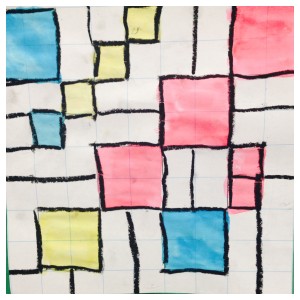
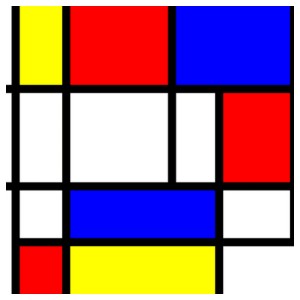
Lauren Rogers Field Trip
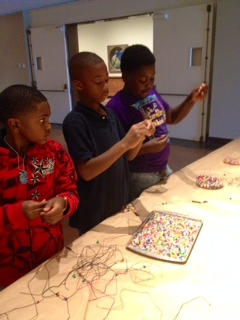
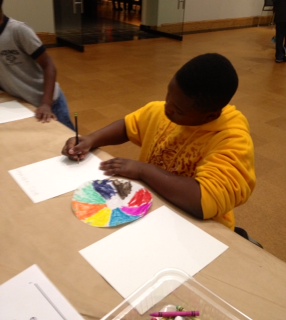
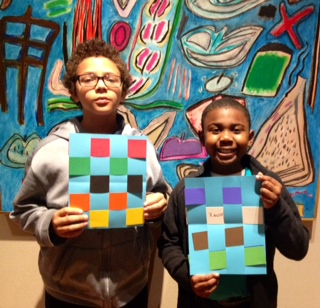
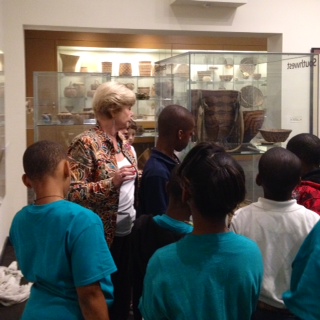 To complete our unit on Native Americans, the fourth grade spent a couple of hours touring the Lauren Rogers Museum. Every year the museum host a program honoring the Choctaw tribe that currently resides in Mississippi. The museum offered a tour of the Native American basket collection ranging from tribes all across the country. The students were able to experience basket weaving, artistically designing their own basket, jewelry making, the native language, as well as native dance ceremonies. The day concluded with a sack lunch in the park.
To complete our unit on Native Americans, the fourth grade spent a couple of hours touring the Lauren Rogers Museum. Every year the museum host a program honoring the Choctaw tribe that currently resides in Mississippi. The museum offered a tour of the Native American basket collection ranging from tribes all across the country. The students were able to experience basket weaving, artistically designing their own basket, jewelry making, the native language, as well as native dance ceremonies. The day concluded with a sack lunch in the park.
Singing Skeletons
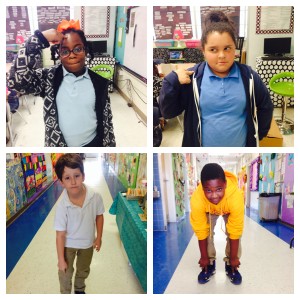 While studying the skeletal system, we replaced the words of the song “Head, Shoulders, Knees, and Toes” with each of the correct terms for the bones of the skeleton. For example, the students sang “Cranium, Scapula, Patella, Phalanges” and “Clavicle, Humerus, Ulna, Radius” to practice learning where their bones are on their body. The students pointed to the bones each time they sang the song. This is a fun way for the students to practice at home as well. Our test will be this Friday!
While studying the skeletal system, we replaced the words of the song “Head, Shoulders, Knees, and Toes” with each of the correct terms for the bones of the skeleton. For example, the students sang “Cranium, Scapula, Patella, Phalanges” and “Clavicle, Humerus, Ulna, Radius” to practice learning where their bones are on their body. The students pointed to the bones each time they sang the song. This is a fun way for the students to practice at home as well. Our test will be this Friday!
Open Faced Portraits
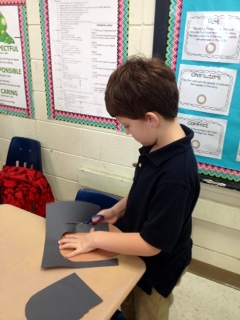
 During a Native American Unit, we read Rough Faced Girl and The Legend of the Blue Bonnet. After the reading of the two stories the teachers modeled how to make an open faced portrait using the character in Rough Faced Girl. We taught the art concepts of proportion, realistic components and overlapping to create depth. After the modeling of the open faced portraits, the students created the face of the portrait based on the main character from the story The Legend of the Blue Bonnet. On the inside of the open faced portrait, the students did a character analysis of the main character using either descriptive language or a visual representation of the character. On the bottom half the students wrote a paragraph comparing the main character to themselves and a time when they experienced the same feelings as the main character.
During a Native American Unit, we read Rough Faced Girl and The Legend of the Blue Bonnet. After the reading of the two stories the teachers modeled how to make an open faced portrait using the character in Rough Faced Girl. We taught the art concepts of proportion, realistic components and overlapping to create depth. After the modeling of the open faced portraits, the students created the face of the portrait based on the main character from the story The Legend of the Blue Bonnet. On the inside of the open faced portrait, the students did a character analysis of the main character using either descriptive language or a visual representation of the character. On the bottom half the students wrote a paragraph comparing the main character to themselves and a time when they experienced the same feelings as the main character.
Text Structure Art
Mr.Brooke came to each class this week to do an arts infusion lesson. He related each of the text structures from reading to a different technique in art to help students remember the difference between the different text structures. The following techniques were used:
Description – The students were given a descriptive sentence: The strong fish swam quickly through the turbulent ocean. The students used crayons to draw what the sentence was describing. The students discussed how to show strong, quickly, and turbulent in their drawing.
Compare and Contrast – The students learned about different colors on the color wheel. Students learned that analogous colors and primary colors are good for mixing together because they will easily create a new color. The students learned that complementary colors are not good for mixing because they will create a brown color. The students chose two analogous or primary colors out of tissue paper and layered the colors to show the two colors being compared and contrasted similar to a Venn diagram.
Cause and Effect – The students placed a drop of watercolor on their paper and blew it. The students watched as the color spread across their paper. The teacher discussed how the cause was when they blew the watercolor, and the effect was the spreading of the color.
Problem and Solution – The teacher told the students that they had a problem. Their problem was they have to paint their paper without using a paintbrush. The teacher set out a variety of art materials that the students could use instead. Some students chose to paint with their finger, others with cotton balls, some with pipe cleaners, etc. The teacher discussed how we all had the same problem, but we came up with different solutions to our problem.
Simple Procedure – The students had to follow three simple steps to create a wax resist using crayons. First the students drew a simple object with a pencil. Next, they traced the object with a crayon – making sure to press down hard. Last, the students painted their object with watercolor. The students saw that the wax resisted the watercolor.
Chronological Order – The teacher read the students a passage. The students had to draw the events from the passage in the order using crayons.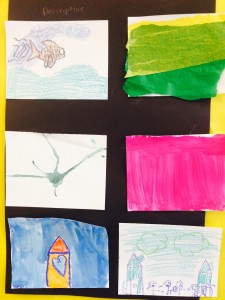
2,4,6,8 Don’t Our Numbers Look Great!
This past week the students did an arts integration lesson with Place Value. The students learned about Wassily Kandinsky’s and how he created mostly abstract art. The students had to abstractly represent a number in the style of Kandinsky while showcasing the difference between each place value. The students also had to show the expanded form, word form, and base ten model on a rubric. The students did a fantastic job! Be sure to come by our hall and check out our display of more students’ abstract numbers.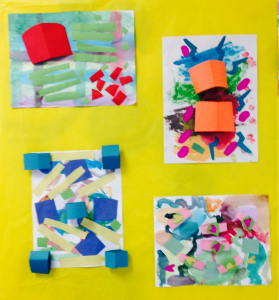
School Starts August 6th!!
We are so excited that school is just around the corner! We can’t wait to see all the new fourth graders that are going to be in our rooms. If you are coming to fourth grade, make sure you have all of the supplies on the supply list. We will begin using them on the first day! If you don’t have one you can pick one up in the office when you complete your registration packet. See you guys soon!

